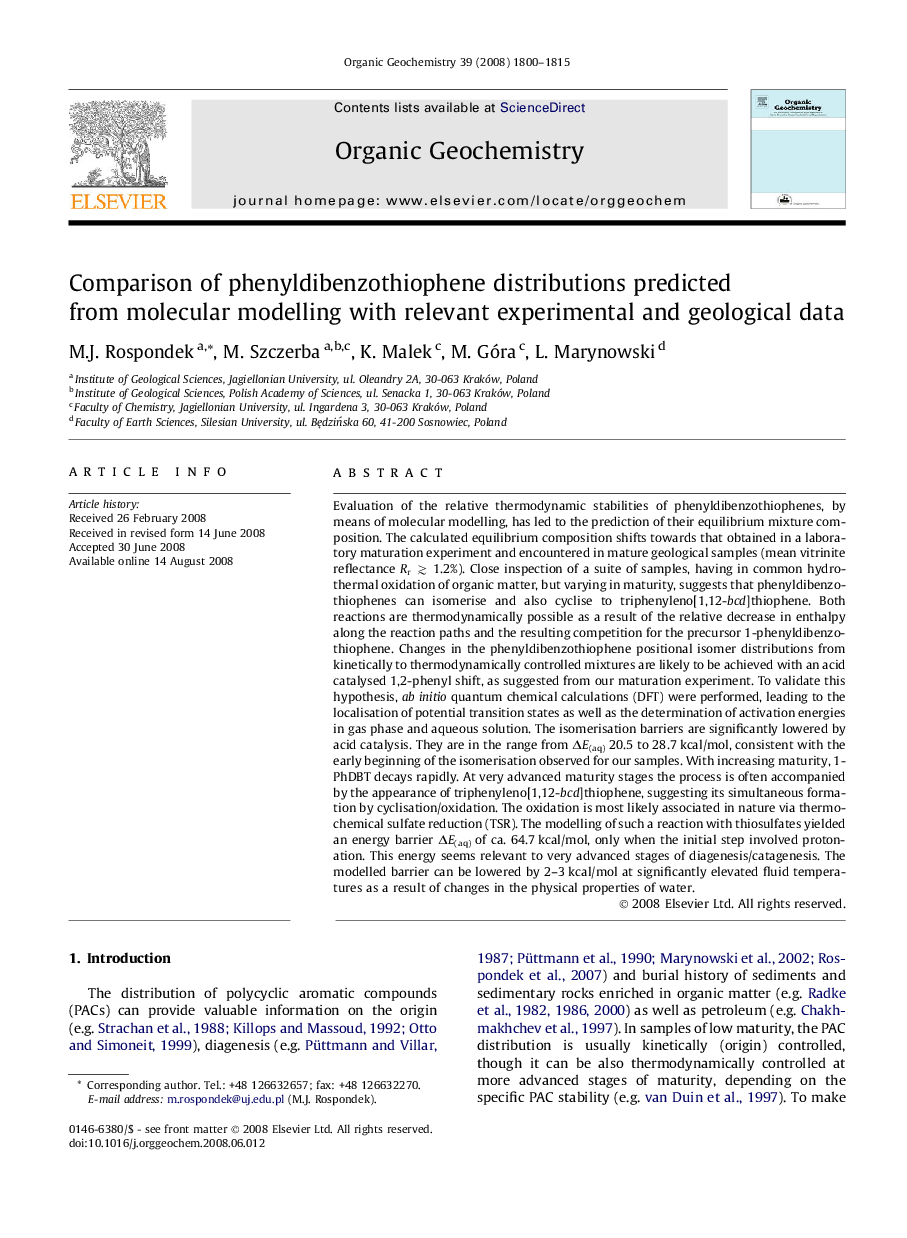| کد مقاله | کد نشریه | سال انتشار | مقاله انگلیسی | نسخه تمام متن |
|---|---|---|---|---|
| 5162889 | 1379758 | 2008 | 16 صفحه PDF | دانلود رایگان |
عنوان انگلیسی مقاله ISI
Comparison of phenyldibenzothiophene distributions predicted from molecular modelling with relevant experimental and geological data
دانلود مقاله + سفارش ترجمه
دانلود مقاله ISI انگلیسی
رایگان برای ایرانیان
موضوعات مرتبط
مهندسی و علوم پایه
شیمی
شیمی آلی
پیش نمایش صفحه اول مقاله

چکیده انگلیسی
Evaluation of the relative thermodynamic stabilities of phenyldibenzothiophenes, by means of molecular modelling, has led to the prediction of their equilibrium mixture composition. The calculated equilibrium composition shifts towards that obtained in a laboratory maturation experiment and encountered in mature geological samples (mean vitrinite reflectance Rr â³Â 1.2%). Close inspection of a suite of samples, having in common hydrothermal oxidation of organic matter, but varying in maturity, suggests that phenyldibenzothiophenes can isomerise and also cyclise to triphenyleno[1,12-bcd]thiophene. Both reactions are thermodynamically possible as a result of the relative decrease in enthalpy along the reaction paths and the resulting competition for the precursor 1-phenyldibenzothiophene. Changes in the phenyldibenzothiophene positional isomer distributions from kinetically to thermodynamically controlled mixtures are likely to be achieved with an acid catalysed 1,2-phenyl shift, as suggested from our maturation experiment. To validate this hypothesis, ab initio quantum chemical calculations (DFT) were performed, leading to the localisation of potential transition states as well as the determination of activation energies in gas phase and aqueous solution. The isomerisation barriers are significantly lowered by acid catalysis. They are in the range from ÎE(aq) 20.5 to 28.7 kcal/mol, consistent with the early beginning of the isomerisation observed for our samples. With increasing maturity, 1-PhDBT decays rapidly. At very advanced maturity stages the process is often accompanied by the appearance of triphenyleno[1,12-bcd]thiophene, suggesting its simultaneous formation by cyclisation/oxidation. The oxidation is most likely associated in nature via thermochemical sulfate reduction (TSR). The modelling of such a reaction with thiosulfates yielded an energy barrier ÎE(aq) of ca. 64.7 kcal/mol, only when the initial step involved protonation. This energy seems relevant to very advanced stages of diagenesis/catagenesis. The modelled barrier can be lowered by 2-3 kcal/mol at significantly elevated fluid temperatures as a result of changes in the physical properties of water.
ناشر
Database: Elsevier - ScienceDirect (ساینس دایرکت)
Journal: Organic Geochemistry - Volume 39, Issue 12, December 2008, Pages 1800-1815
Journal: Organic Geochemistry - Volume 39, Issue 12, December 2008, Pages 1800-1815
نویسندگان
M.J. Rospondek, M. Szczerba, K. Malek, M. Góra, L. Marynowski,